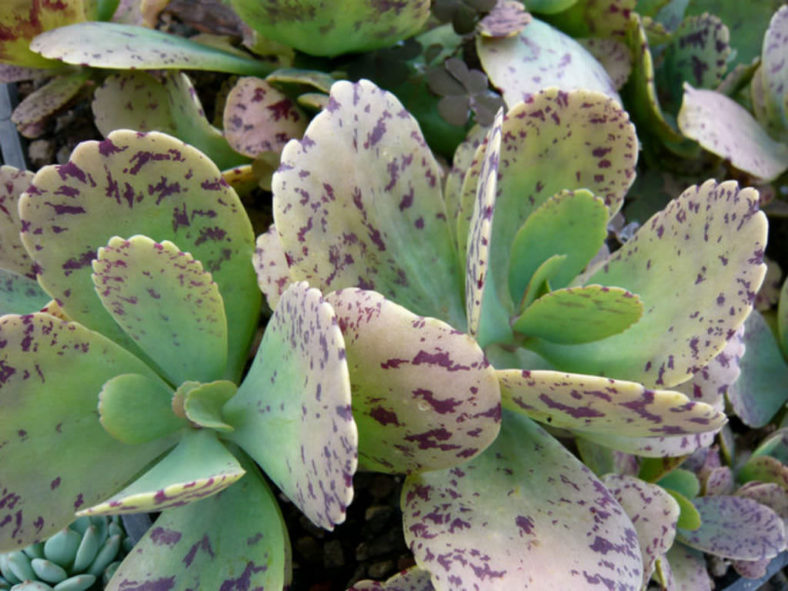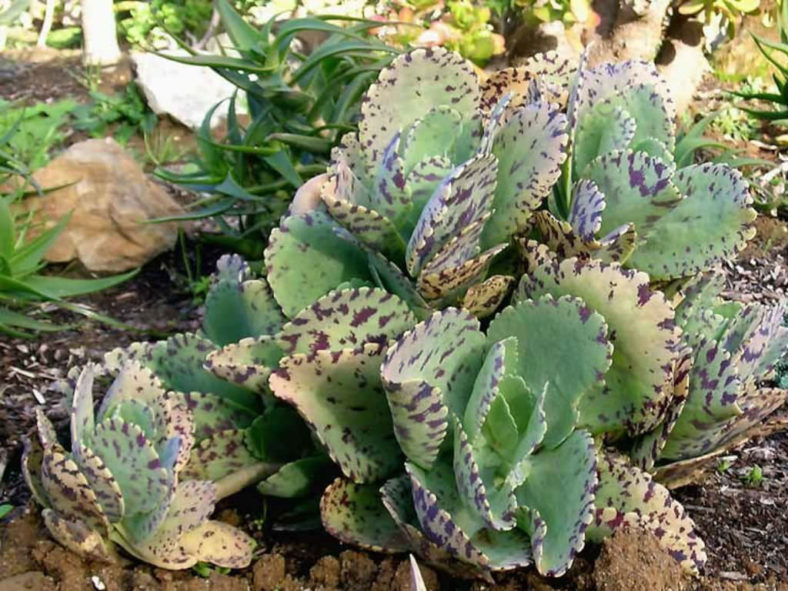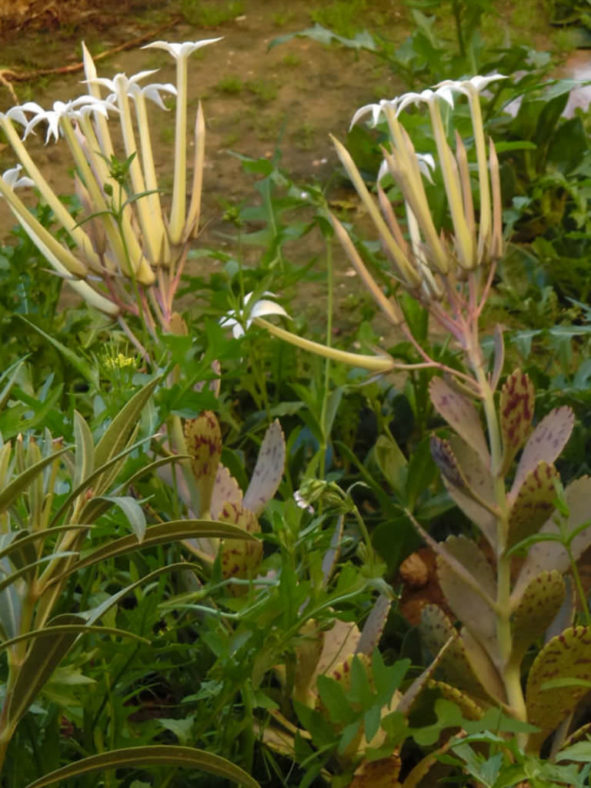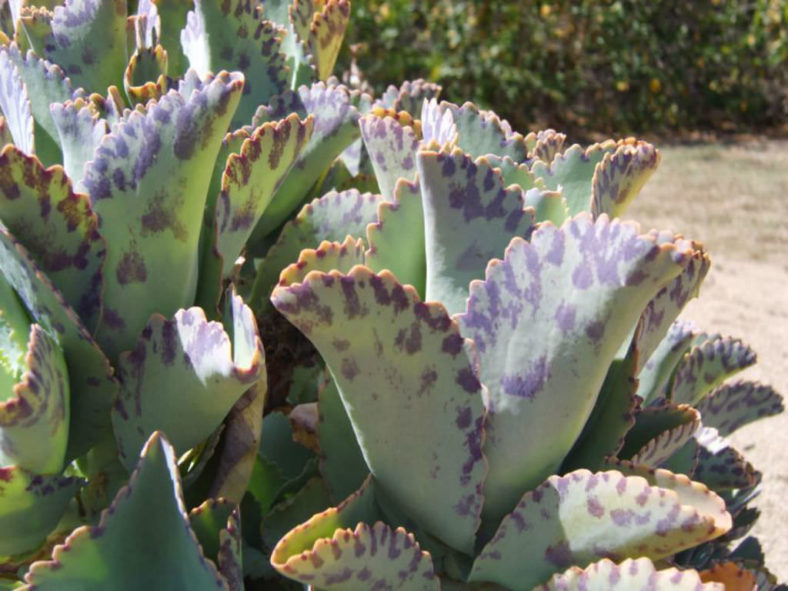Scientific Name
Kalanchoe marmorata Baker
Common Name(s)
Penwiper, Penwiper Plant, Spotted Kalanchoe
Synonym(s)
Kalanchoe grandiflora, Kalanchoe macrantha var. marmorata, Kalanchoe marmorata var. maculata
Scientific Classification
Family: Crassulaceae
Subfamily: Sedoideae
Tribe: Kalanchoeae
Genus: Kalanchoe
Etymology
The specific epithet "marmorata" (pronounced "mar-mor-RAY-tuh") means "marbled" and refers to the marbled surface of the leaves of this species.
Origin
Kalanchoe marmorata is native to central and eastern Africa, from Congo to Ethiopia, Sudan, and Somalia. It grows on rocky slopes and cultivated lands at elevations between 3,940 and 7,880 feet (1,200 and 2,400 m).
Description
Kalanchoe marmorata is an attractive succulent with erect or decumbent stems with beautiful, glaucous grey-green leaves often spotted purple. It can grow up to 4.3 feet (1.3 m) tall. The leaves are obovate or subcircular, measuring up to 8 inches (20 cm) in length and 5 inches (12.5 cm) in width. The margins of the leaves are entire, undulate, create, or serrate.
The flowers have slender tubes and spreading lobes, reaching a length of 1 inch (2.5 cm) and a diameter of 0.5 inches (1.3 cm). They can appear from winter to early spring, arranged in paniculate cymes that can measure up to 1 foot (30 cm) in length. They are pure white, rarely cream-colored, sometimes flushed pale pink, and the lower parts greenish.

Hardiness
USDA hardiness zones 10b to 11b: from 35°F (1.7°C) to 50°F (10°C).
How to Grow and Care
Kalanchoe care is minimal, but be cautious about light levels. Intense sunlight can burn the tips of the leaves. Place pots in partial-sun to light-shade areas when growing Kalanchoes.
The flowering varieties are highly rewarding for their colorful and long-lasting flowers. They prefer bright, sunny locations, especially in the growing season. Water moderately from fall to winter when the growth is most active. Reduce watering during the hottest summer months when the plants are mostly dormant and winter when the growth slows significantly. Let the soil surface dry out between waterings. Watch the fleshy leaves for signs of water distress. An ordinary potting soil mix is fine. Feed bi-weekly during the growing season with a liquid fertilizer, or use slow-release pellets.
These small plants require repotting every few years. When repotting, take extra care in handling, as the leaves are somewhat brittle and can snap easily. Clay pots work exceptionally well for planting Kalanchoes. Ensure pots drain well and saucers can easily be emptied.
Learn more at How to Grow and Care for Kalanchoe.
Links
- Back to genus Kalanchoe
- Succupedia: Browse succulents by Scientific Name, Common Name, Genus, Family, USDA Hardiness Zone, Origin, or cacti by Genus
Photo Gallery
Click on a photo to see a larger version.


